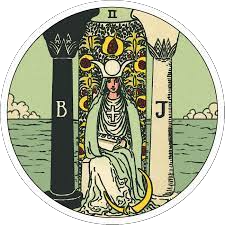The Major Arcana consists of 22 cards that represent significant life lessons, spiritual journeys, and major events. These cards deal with the core themes of human experience. Here’s a brief overview of the Major Arcana cards:
- The Fool: Represents new beginnings, innocence, and taking a leap of faith.
- The Magician: Symbolizes personal power, manifestation, and the ability to create reality.
- The High Priestess: Represents intuition, hidden knowledge, and the subconscious mind.
- The Empress: Represents nurturing, abundance, and fertility, both literal and metaphorical.
- The Emperor: Symbolizes structure, authority, and leadership.
- The Hierophant: Represents tradition, spiritual guidance, and mentorship.
- The Lovers: Represents love, union, and important life choices.
- The Chariot: Symbolizes victory, determination, and control over challenges.
- Strength: Represents courage, inner strength, and self-discipline.
- The Hermit: Represents introspection, solitude, and spiritual search for truth.
- Wheel of Fortune: Symbolizes cycles, destiny, and turning points in life.
- Justice: Represents fairness, balance, and truth.
- The Hanged Man: Symbolizes letting go, surrender, and seeing things from a new perspective.
- Death: Represents transformation, endings, and new beginnings.
- Temperance: Represents balance, moderation, and harmony.
- The Devil: Symbolizes temptation, materialism, and feeling trapped.
- The Tower: Represents sudden change, upheaval, and breaking down of false structures.
- The Star: Symbolizes hope, inspiration, and spiritual guidance.
- The Moon: Represents illusion, intuition, and hidden fears.
- The Sun: Symbolizes joy, success, and positivity.
- Judgment: Represents awakening, transformation, and self-reflection.
- The World: Symbolizes completion, fulfillment, and the end of a cycle.
